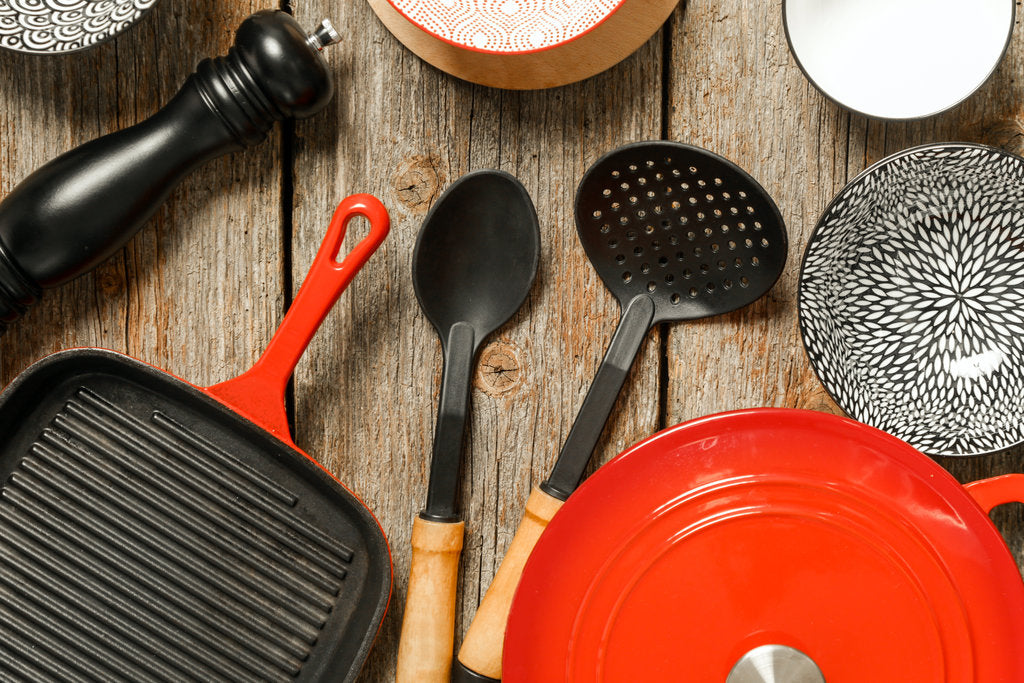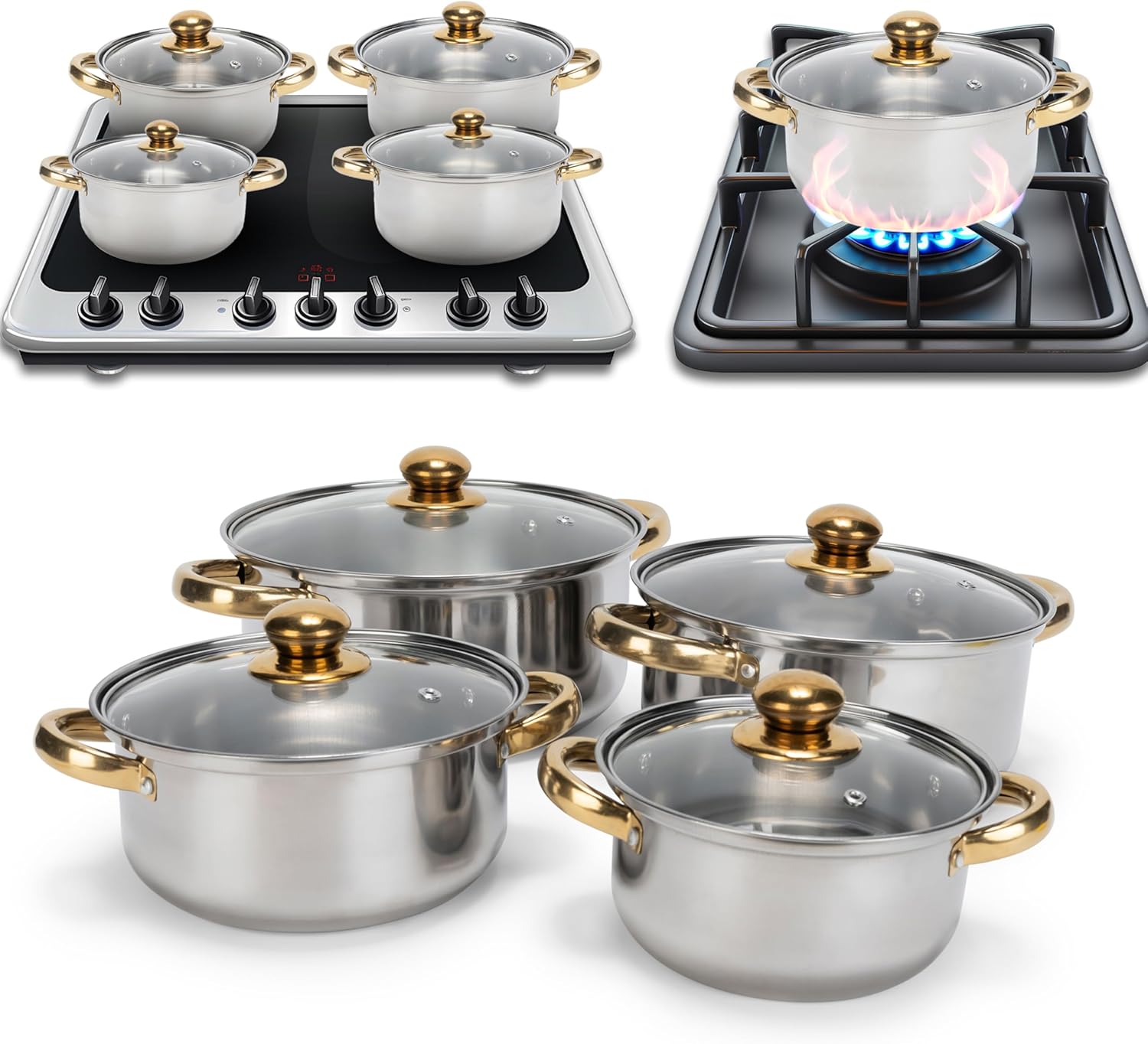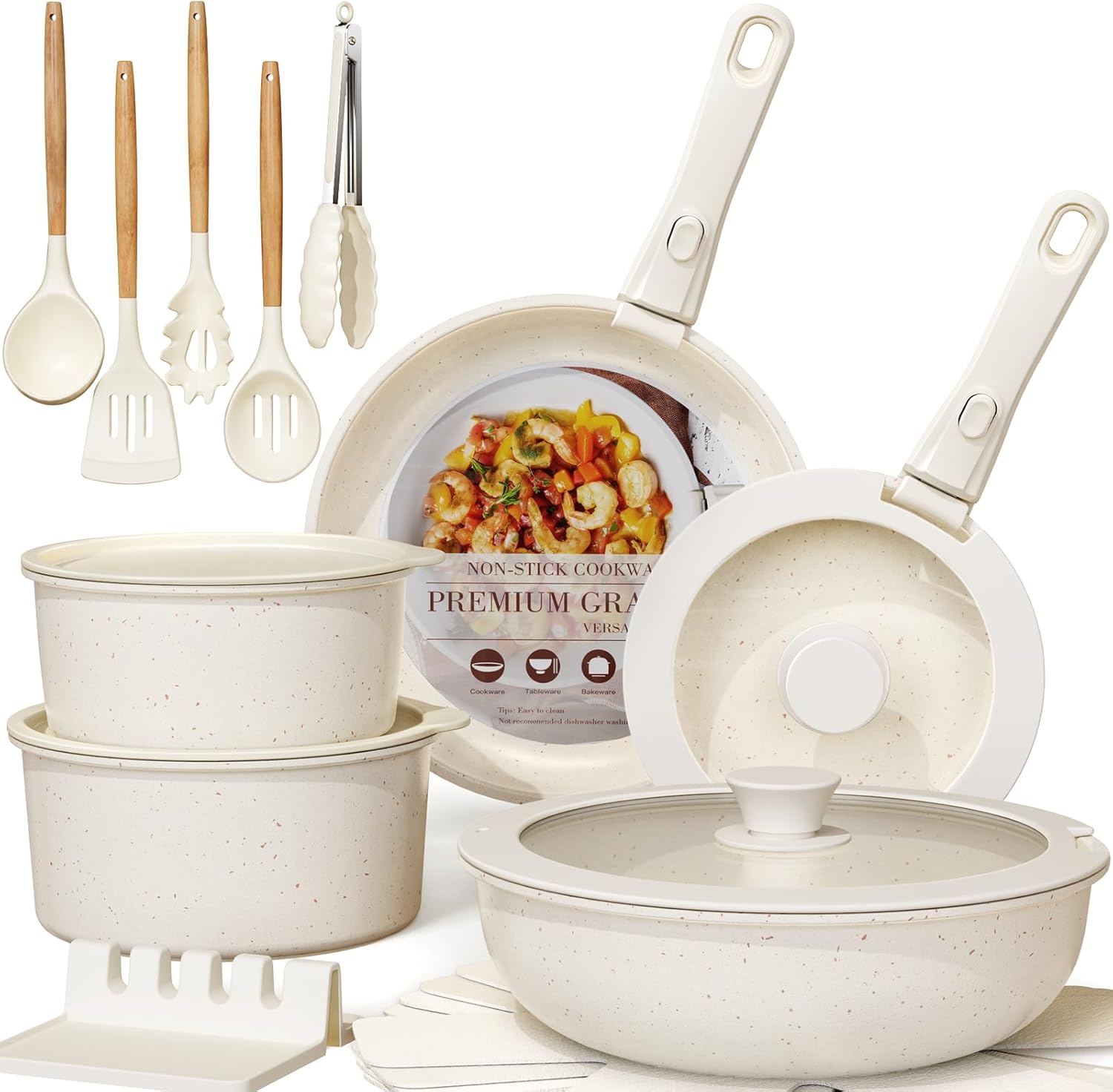Enamel cookware can chip and crack over time, diminishing its aesthetic and functionality. It also conducts heat less efficiently than other materials, leading to uneven cooking.
What are the Disadvantages of Enamel Cookware:Enamel cookware, known for its vibrant colors and smooth, glass-like surface, presents a classic aesthetic that often comes with a higher price tag. Yet, these visually appealing pots and pans hold hidden disadvantages that are important for any cook to consider.
Their weight can be cumbersome, making handling and storage a challenge for some users. With a surface prone to scratching, the use of metal utensils is discouraged, leading to extra care during both cooking and cleaning. Despite its non-stick properties, enamel can stain, requiring specific cleaning methods to maintain its appearance. Understanding these drawbacks is essential for anyone seeking to invest in a long-lasting and practical kitchenware collection.

Credit: unocasa.com
The Composition Of Enamel Cookware
Understanding the Composition of Enamel Cookware is vital. This knowledge helps identify its disadvantages. Let’s dive into what makes enamel cookware unique, and possibly not the perfect choice for everyone.
Materials Used
Enamel cookware starts with a base, usually iron, steel, or aluminum. The base material significantly influences cookware performance. Iron and steel are durable but heavy. Aluminum is lighter but less durable. Each material affects how the cookware heats up and responds to temperature changes.
- Iron: Heavy and heats evenly.
- Steel: Durable and resistant to rust.
- Aluminum: Light but can warp over time.
Coating Process
The enamel coating is what sets this cookware apart. This coating is made from glass powder that is fused to the base at high temperatures. While this process creates a non-stick, smooth surface, it has its drawbacks.
- High heat can cause the coating to crack or chip.
- Over time, the enamel may wear down, exposing the base material.
- Not all enamel coatings are created equal. Some may contain harmful chemicals.
The quality of the enamel coating varies. Lower quality coatings chip easily. This not only affects the cookware’s appearance but also its safety and longevity. Choosing high-quality enamel cookware is crucial.
Credit: www.fix.com
Potential Health Risks
Enamel cookware, with its glossy finish, brightens up any kitchen. But beyond the shine, there are concerns. Let’s explore the potential health risks linked to using enamel cookware.
Users often choose enamel cookware for its durability and non-stick properties. Yet, certain risks may lurk beneath the surface.
Lead And Cadmium Exposure
Lead and cadmium can be found in enamel cookware coatings. They add color and resistance to wear. If the cookware is old or poorly manufactured, these toxic elements might leak into food. Here’s why this matters:
- Lead affects the nervous system.
- Cadmium targets the kidneys.
- Both are harmful, especially to children and pregnant women.
Chemical Leaching Concerns
Chemical leaching happens when cookware materials mix into food. Acidic foods like tomatoes cause more leaching. This can lead to ingestion of harmful chemicals. Here’s what to consider:
| Cookware Age | Leaching Risk |
|---|---|
| Old or Damaged | Higher |
| New and Undamaged | Lower |
Enamel cookware should be replaced if chipped or cracked. This reduces the risk of chemicals entering your meals.
Durability Concerns
Many cooks love enamel cookware for its bright colors and smooth surface. Yet, questions arise about how long these pots and pans last. Let’s dive into the concerns about durability when it comes to enamel cookware.
Chipping And Cracking
Enamel cookware does not handle drops or knocks well. The enamel coating can chip if banged too hard. This reveals the metal underneath, which could rust or react with food. Even stacking pots and pans may lead to chips.
- Chipping can occur from simple mishandling.
- Cracks may appear with sudden temperature changes.
- Damage affects the cookware’s safe use and appearance.
Longevity Compared To Alternatives
Enamel pots and pans may not last as long as other types. For instance, cast iron or stainless steel options often outlive enamel. They resist wear and tear better over time.
| Material | Durability |
|---|---|
| Enamel | Lower |
| Cast Iron | Higher |
| Stainless Steel | Higher |
Repeated cooking and cleaning can wear down enamel faster. Other materials stand up to this use better.
Heat Distribution Issues
Enamel cookware offers a classic look with a smooth, hard finish. Yet, it faces heat distribution challenges. These issues can affect cooking results.
Uneven Cooking
Hot spots are common in enamel pots and pans. They can lead to unevenly cooked meals. This may frustrate home cooks aiming for consistent textures and flavors.
- Hot spots cause some areas to burn.
- Food cooks unevenly.
- Stirring often is required.
Temperature Limitations
Enamel cookware can’t handle high heat. This limits cooking techniques such as searing.
| Max Temperature | Effect on Cooking |
|---|---|
| Medium Heat | Suitable for most dishes |
| High Heat | Risk of damage to enamel |
Following temperature guidelines is essential for enamel cookware’s longevity.
Maintenance And Care Challenges
Enamel cookware adds a splash of color to your kitchen. But it demands careful handling. This cookware requires more attention than others. Let’s dive into the maintenance and care challenges it presents.
Special Cleaning Requirements
Enamel surfaces are prone to staining. Regular cleaning is vital. Here are the steps:
- Let the cookware cool down before washing.
- Use warm soapy water for cleaning.
- Avoid harsh detergents and scrubbers.
- Gentle sponges are best for enamel.
- Dry cookware immediately to prevent rust.
Avoiding Damage During Use
Enamel cookware can last long if used properly. Follow these tips:
- Do not drop; enamel can chip.
- Use wooden or silicone utensils to prevent scratches.
- Avoid sudden temperature changes.
- Store carefully to avoid chipping.

Credit: www.reddit.com
Economic Considerations
Exploring the Economic Considerations of enamel cookware reveals two main points. These are the Initial Cost and Cost-Effectiveness Over Time. Let’s dive deep into each aspect to understand better.
Initial Cost
The initial cost of enamel cookware might surprise some shoppers. This cookware often comes with a higher price tag compared to other types. High-quality enamel cookware, known for its durability and heat distribution, demands a significant upfront investment. This might not be ideal for everyone, especially those on a tight budget.
Cost-effectiveness Over Time
Considering the cost-effectiveness over time paints a different picture. Enamel cookware, while expensive upfront, can be a wise long-term investment. Its robust build and resistance to scratches and chips mean it lasts longer than many alternatives. This longevity can offset the initial cost over time. Yet, not all enamel cookware is created equal. Cheaper options might degrade faster, leading to more frequent replacements and ultimately, higher costs.
- Durability makes high-quality enamel cookware a long-term investment.
- Cheaper versions may not last long, increasing overall costs.
In summary, economic considerations for enamel cookware involve weighing the initial investment against potential long-term savings. Buyers should consider their budget and how often they plan to use the cookware. Making an informed decision requires understanding both the upfront cost and the value over time.
Environmental Impact
The Environmental Impact of enamel cookware is significant. This impact comes from how it’s made and thrown away. Let’s explore these areas.
Manufacturing Footprint
Making enamel cookware requires a lot of energy. Factories burn fossil fuels to melt metal and enamel. This process releases carbon emissions into the air. It contributes to global warming. The use of water and chemicals in the process also affects local ecosystems.
Disposal And Recyclability
Disposing of enamel cookware is not easy. Once damaged, it often ends up in landfills. Here, it does not break down. This adds to the growing problem of waste management. Enamel cookware is hard to recycle. The process of separating metal from enamel is complex and costly. Few facilities accept enamel for recycling. This limits options for responsible disposal.
- High energy use in manufacturing
- Carbon emissions contribute to global warming
- Water and chemical usage impacts ecosystems
- Difficult to recycle, often ending up in landfills
Weight And Handling
Enamel cookware has a timeless charm. Kitchens love it for its durability and non-stick qualities. Yet, not all that glitters is gold. A significant aspect to consider is the weight and handling of enamel cookware.
Heaviness And Comfort
One cannot overlook the heft of enamel pots and pans. Moving them from stove to oven can be taxing. The weight impacts cooking comfort. People with wrist issues may find it particularly challenging.
- Enamel cast iron is especially heavy.
- Transferring full pots requires care and strength.
- Lifting with both hands is often necessary.
Storage Inconvenience
Enamel cookware’s bulkiness presents storage challenges. Large cabinets or ample shelf space are needed. Stacking heavy pans can damage lighter items below. Careful organization is key.
| Storage Tip | Benefit |
|---|---|
| Hang pots and pans | Save cabinet space |
| Use pot racks | Easy access |
| Separate with liners | Prevent scratches |
Aesthetic Limitations
Enamel cookware brightens kitchens with its sleek, glossy finish. Yet, these pieces have aesthetic downsides. Let’s explore these limitations.
Color Fading
Enamel cookware may lose its vibrant hue over time. High heat and sunlight contribute to this issue. Bright reds can turn pink; deep blues may become pale. Cooks cherish their kitchen’s look. Faded pots and pans can clash with decor themes.
Staining Over Time
White or light-colored enamel is prone to stains. Spaghetti sauce, curry, and even tea can leave marks. These stains often resist regular cleaning efforts. A once-pristine collection can look unsightly with stubborn discolorations.
Frequently Asked Questions
Is Enamel Better Than Non-stick?
Enamel cookware is more durable and resistant to scratches than non-stick, which can degrade with high heat and abrasion. Enamel also withstands acidic foods better, enhancing its longevity.
Which Is Better, Enamel Or Stainless Steel?
Enamel offers a durable, non-stick surface, ideal for easy cleaning. Stainless steel boasts superior heat distribution and longevity. Your choice depends on cooking needs and maintenance preferences.
How Long Does Enamel Cookware Last?
Enamel cookware can last for decades with proper care and maintenance. Its durability ensures it often outlives other types of cookware.
Is Enamel Cookware Safe To Eat From?
Yes, enamel cookware is generally safe for cooking and eating, as it is non-toxic and resists leaching chemicals into food.
Conclusion
Understanding the drawbacks of enamel cookware is crucial for informed kitchen choices. Potential health risks and durability concerns are significant. Despite its aesthetic appeal, the cons warrant attention. Choose wisely, considering both pros and cons, for a safer, more efficient cooking experience.





Leave a Reply